13th century brocaded band from Stary Brzesc, Poland – tablet weaving?
This article is about the 13th century brocaded band from Stary Brześć. If you are here for the tablet weaving pattern (threaded-in), here it is in PDF.
The Archeological and Ethnographic Museum in Lodz, Poland, has in its collection a unique 13th textile find – a very decorative, brocaded passament. The band (in two pieces) was found in a grave in Stary Brześć (Kuyavia, north-central Poland) during archeological excavations in the 1950s. The grave (no 564) belonged to a woman as two temple rings were also unearthed there.
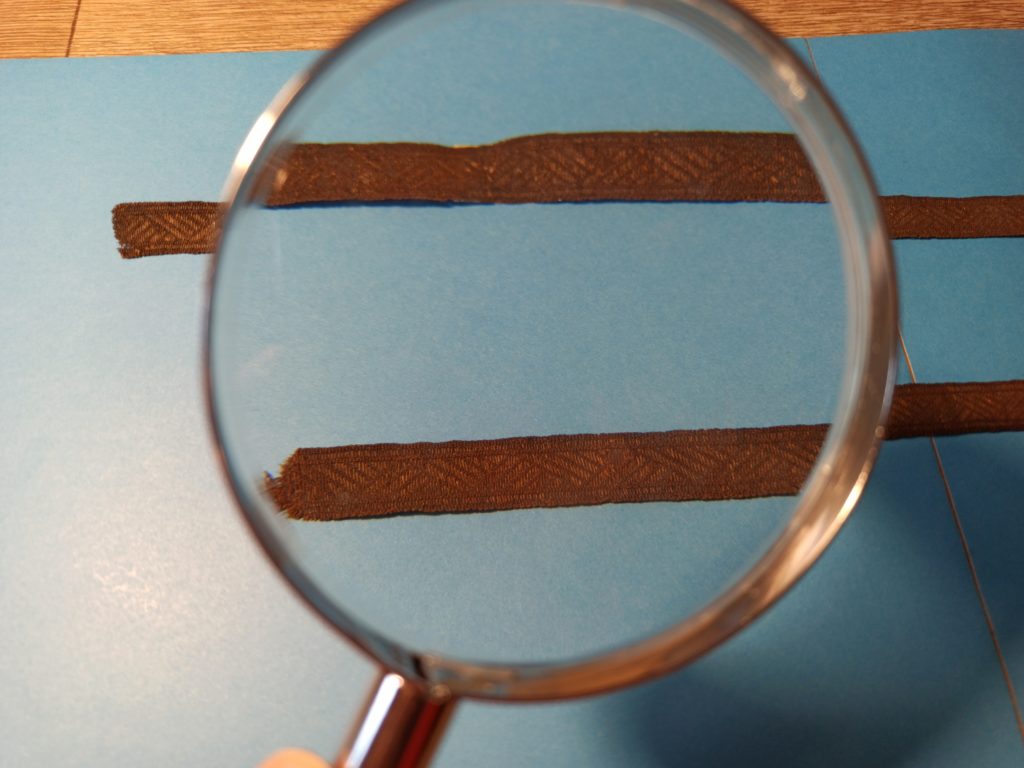
The area of Stary Brześć and nearby Brześć Kujawski (anglicized to Kuyavian Brest) has been thoroughly researched by archaeologists. Numerous traces of settlement dating back to the Neolithic were discovered there. The sites are archeologically very interesting as Kujyvia located to the west of the Vistula River, represents one of the first large agricultural settlements in northern Europe. In the early Middle Ages around Stary Brześć there was a settlement, while about 1250 CE the nearby village of Brześć Kujawski was granted city rights. Now Stary Brześć, where our band was found, is a small village within Włocławek County, Kuyavian-Pomeranian Voivodeship.
What do we know about the band?
Stary Brześć and Brześć Kujawski have attracted the attention of Polish archeologists since the 1930s. The outcomes of their excavations were published in the national archeological yearbook. It was in the late 1950s when the band from Stary Brześć was found. The excavations continued in the 70s and 80s bringing even more interesting artifacts but nothing even remotely similar to this object. Even though this unique object has been displayed on the permanent exhibition for years, it has not been studied since lately. Fortunately when I called the Museum and asked about the band, the staff were very enthusiastic to popularize it and engage in further research. Thanks to their welcoming attitude, I had the opportunity to see the band in reality. It is gorgeous – very fine and well preserved. The metal (golden?) thread is clearly visible. The band is rather tiny, only 13 mm wide.
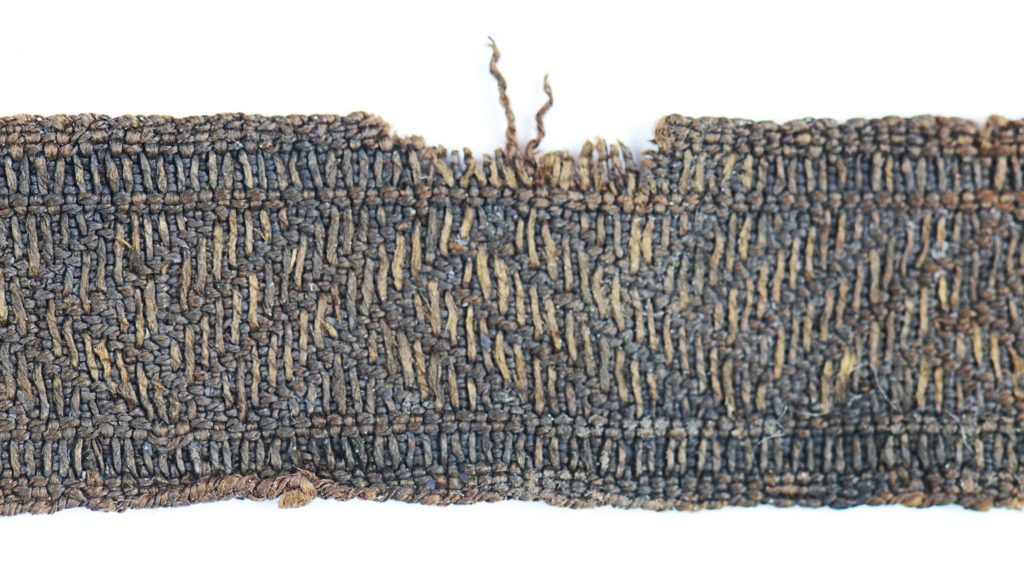
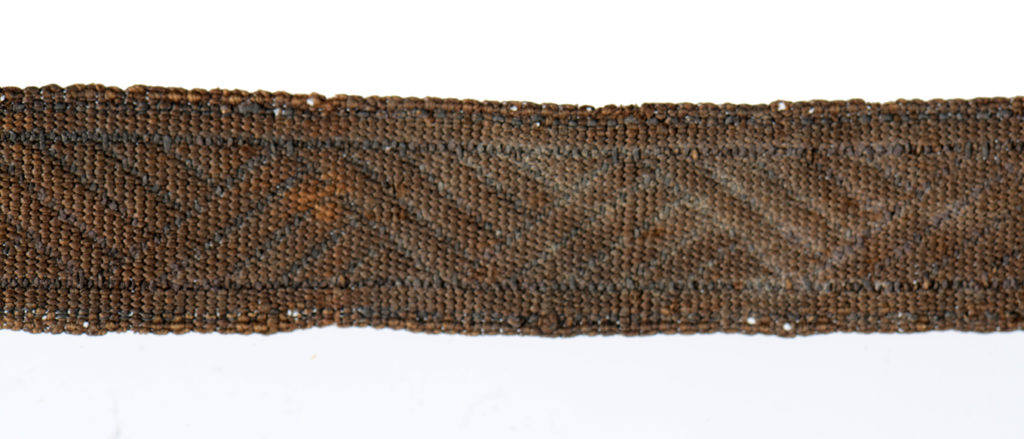 Back of the band from Stary Brześć. Photo: Archeological and Ethnographic Museum in Łódź
Back of the band from Stary Brześć. Photo: Archeological and Ethnographic Museum in ŁódźIn May 1987 Jacek Moszczyński, archeologist from Lodz, gave a paper about textiles unearthed in Stary Brześć on NESAT III (North European Symposium For Archaeological Textiles). The text is quite old and does not exhaust the topic. What is more, now we have much better methods of textile research so please keep that in mind when reading his article. From Moszczyński’s paper we learn that the warp of the band found in Stary Brześć consisted of 58 threads, 0.30 do 0.35 mm thick. The basic weft and warp threads were in slightly different shades of brown. However, no detailed study of the colours has been conducted so we cannot be sure if the original colour was indeed brown or it changed to brown after lying in the ground for centuries.
Three threads are used for wefting the passament. First come the two threads of Base Weft I [Einschuss I] (coloured grey in Abb. 16.10) and then one thread from Weft II [Einschuss II] (coloured black in Abb. 16.10). Weft I is connected to the warps using a rib weave [Ripsbindung]: Weft II forms the pattern shown on the front side of the passament. The threads of Weft I have the same colour as the warp. They are adjacent to one another. Each shows a slight Z twist and is around 0.25 mm thick. Weft II which forms the pattern seen on the passament is a thread with metal braiding. The warp has a lighter colour than the brown-gold colour of the base Weft I. The approximately 0.3 mm thick Weft II has a slight S twist. The metal band has been wrapped around the core; it is poorly preserved and in many places only its imprint remains. The metal band was around 0.4 mm thick and wrapped around the core with an S twist, meaning a left turning direction.
The passament was produced using a borcading technique [Broschiertechnik]. The rib weave base Weft I was interlaced with the threads of the warp across the entire width of the passament, meaning on 58 warps. After one threading of the paired Weft I, the pattern-forming Weft II is threaded. The pattern appears on the 50 middle threads of the warp (Abb. 16.9, 16.10). (p. 134, translation from German by Joseph Sturm).
In the text there is also a very helpful scheme which shows that the band was not brocaded on the entire width. The selvages were left out.
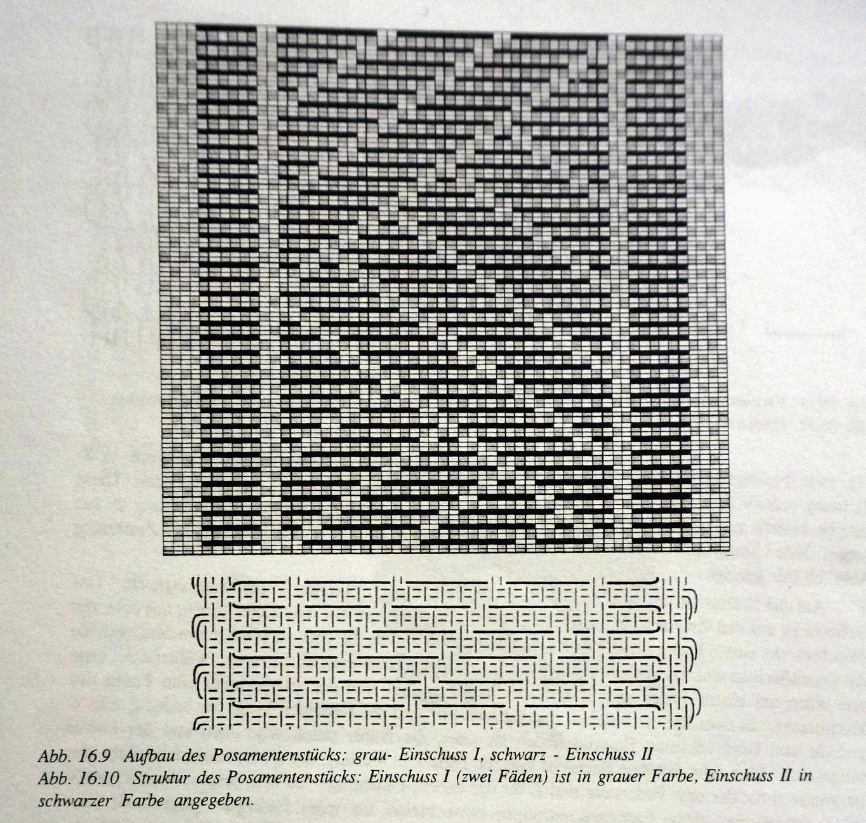
What we do not know
It is uncertain whether the passament was made with wool or silk thread. The latter one is more probable as the band is brocaded with a yellow (golden?) thread, possibly horse hair or linen thread wrapped in metal. Such bands – silk and brocaded are well known from Birka, the trading centre in southern Sweden most active from about 800 to 975 CE. It would very exciting to compare them with the band from Stary Brześć, even if the latter one is about 300 years younger.
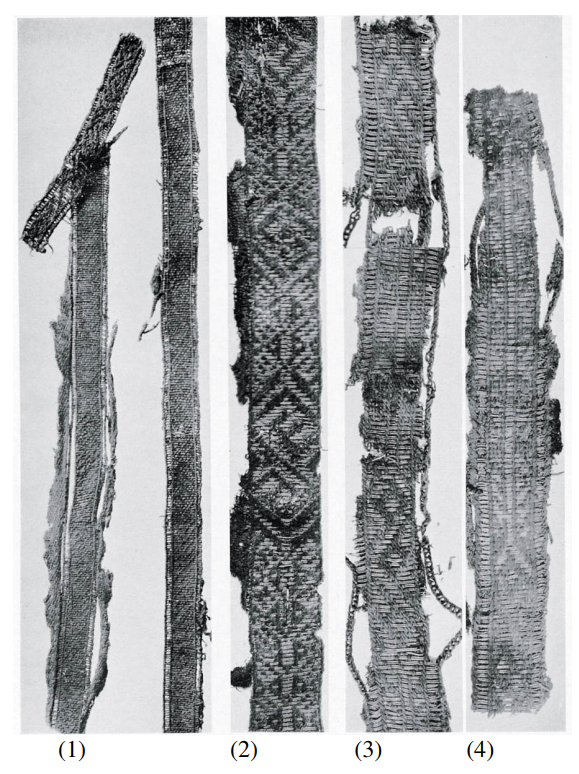
Now, the big question – was the band from Stary Brześć tablet woven? For years the object was described as such and compared to another brocaded and tablet woven band found in Gdańsk, Pomerania, yet much younger – dated to the 11th century. Moszczyński does not make final conclusions about the technique the basic eave was achieved in the Stary Brześć passament but he settles with “rib weave”. He writes,
In relation to the production of the passament from Stary Brzesc, I am able to make use of the suggestion by A. Nahlik in relation to the silk passament from Gdansk. On both fragments (from Stary Brzesc and from Gdansk) two wefts are visible; one base weft [Grundeinschuss] and one decorative weft [Ziereinschuss]. The base weft is interlaced with the warp using a linen weave [Tuchbindung] (Gdansk). In both cases the decorative weft forms the pattern. The decorative weft from Gdansk also shows signs of having been wrapped in metal. The piece from Stary Brzesc may, like the piece from Gdansk, may have been woven using a tablet [Brettchen] with a shed rod [Stammschussfach] and with a moving shed [Schussfach] for shifting base Weft I. Using a rod [Stäbchen] for completing the pattern (forming the shed for the pattern-forming weft) is conceivable. (p. 135, translation from German by Joseph Sturm).
I consulted Anna Grzelak who runs the Nigdziekolwiek blog about to old weaving techniques. She made several experiments, trying to guess the weaving method of the band from Stary Brześć and concluded that the basic weave could have been made on a rigid heddle (though this is unlikely because too much warp yarn goes to waste), warp-weighted loom or other types of looms, not necessarily tablets. She also tried two-hole tablet weaving which produces plain weave. On the other hand, the band is extremely fine (1.3 mm wide) and its similarity to other brocaded bands from the early Middle Ages makes me think the two hole missed-hole technique could have been applied. Looking at the close-ups, the two twisted warp threads might have resulted not from the rib weave but from the rotation of the tablets. But I am not an expert – the good news is that the Museum is interested in further research about the band so soon we might solve the question.
Tablet weaving pattern
Meanwhile, I hope the photographs will inspire you to recreate the pattern in wool or silk, inkle loom or tablets, you name it. I liked the geometry of the brocading and decided to rework it into a threaded-in pattern. This way I can use the band in reenactment of a not-so-wealthy persona as silk and brocaded bands were worn by people of very high social status. Please feel free to use and share this GTT pattern. The way to read it is shown below.
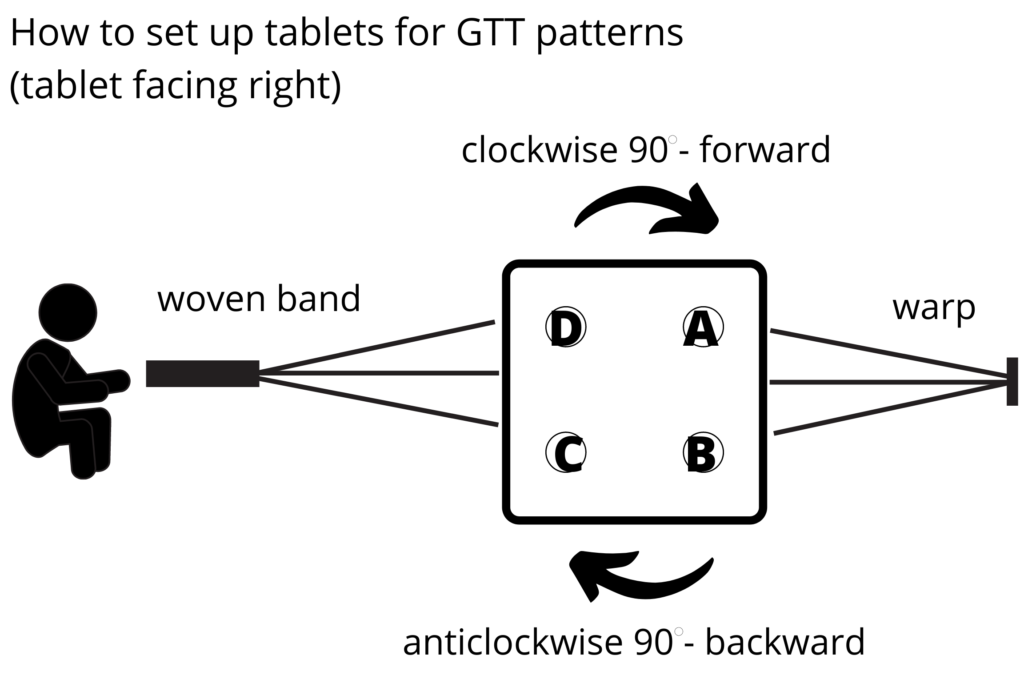
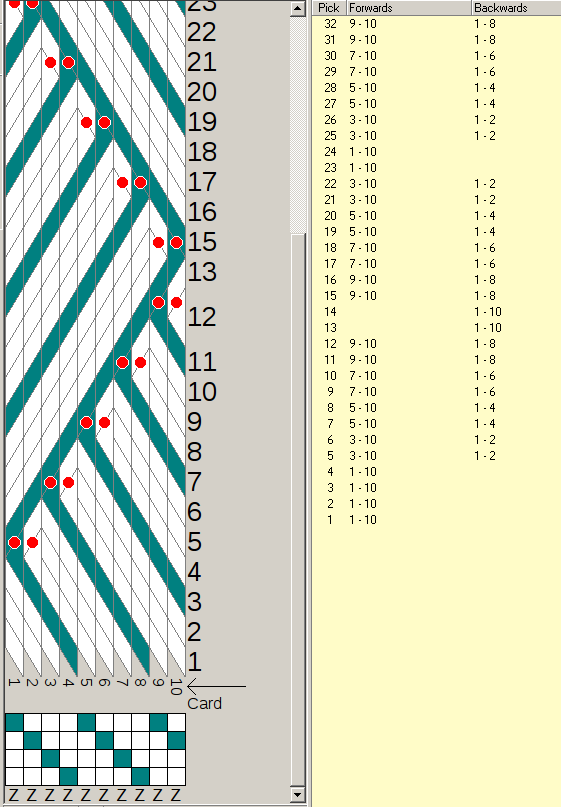

Download the Stary Brześć pattern in PDF
This is how it comes out in wool (maavillane, 100g = ca 350m, natural and hand dyed with madder root).
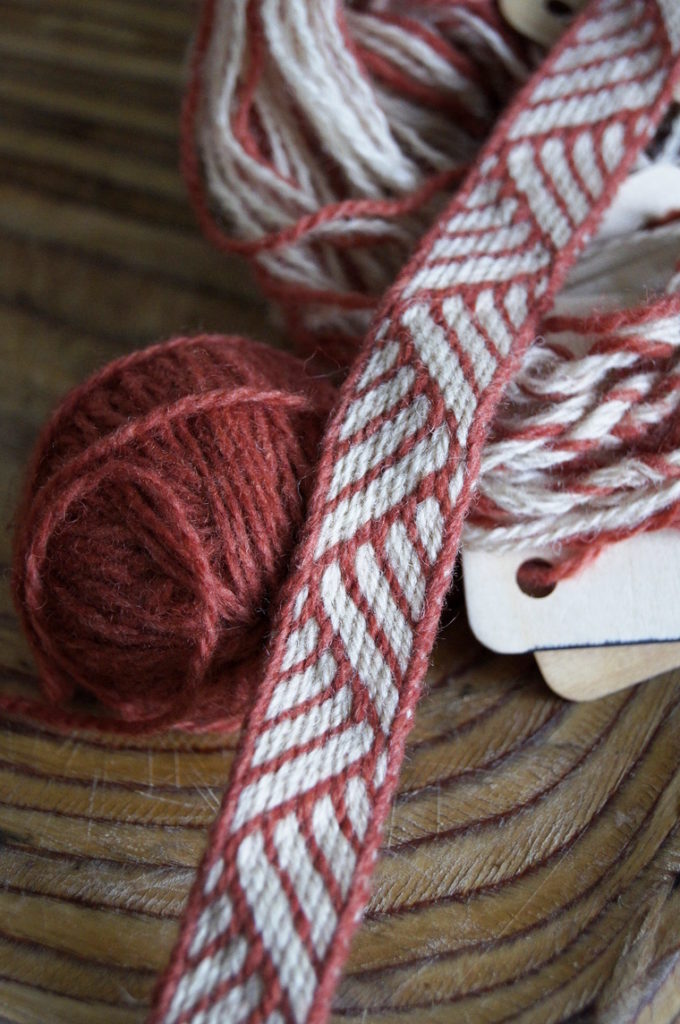
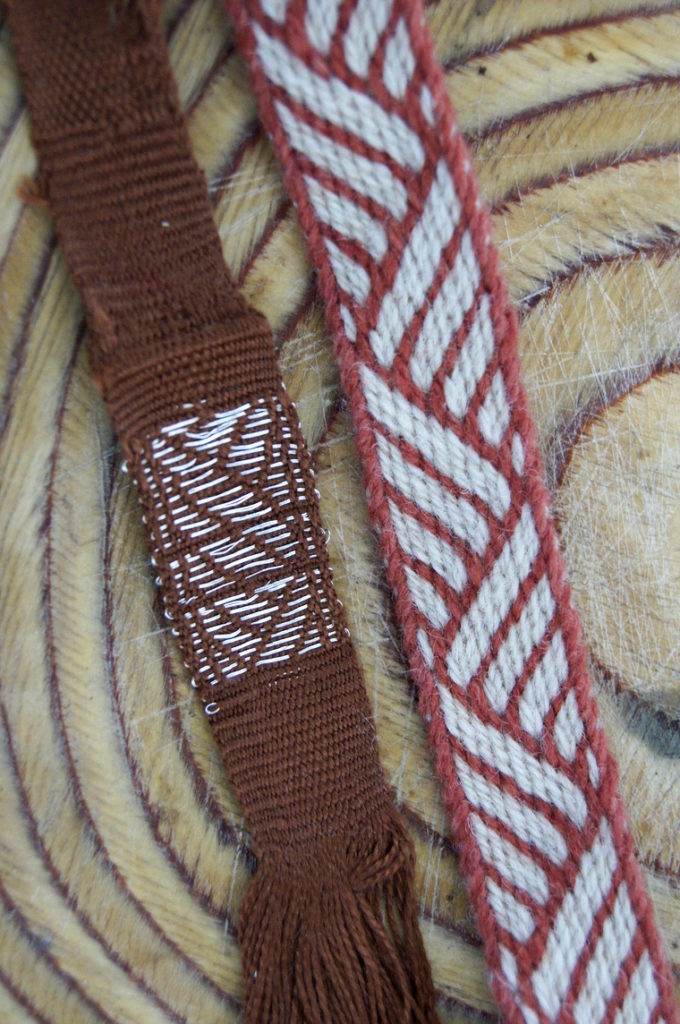
If you have questions or comments, please contact Emilia on Instagram @_lostthread_ or leave your comment under the post. If you wish to show your interpretation of the Stary Brześć band, be sure to reach out. We will post it on our social media accounts. Thank you!
We would like to thank the Museum and especially, Mrs Iwona Nowak for her contribution to this project.
Please note that the pictures of the original band belong to the Archeological and Ethnographic Museum in Lodz and cannot be reproduced without the permission of the owner.
Sources:
Moszczyński, Jacek. 1990. “Die Gewebe aus dem Gräberfeld des 12.-16. Jh. in Stary Brzesc, Wojewodschaft Wloclawek” w: Walton, Penelope i Wild, John P., (red.) Textiles in Northern Archaeology: NESAT III Textile Symposium in York 6-9 May 1987. Londyn: Archetype Publications. [Translation to English by Joseph Sturm].
http://nigdziekolwiek.com/2020/08/czasem-potrzeba-testu-krajka-broszowana-ze-starego-brzescia/
This project was made possible thanks to the funding from the Ministry of Culture and National Heritage of Poland.


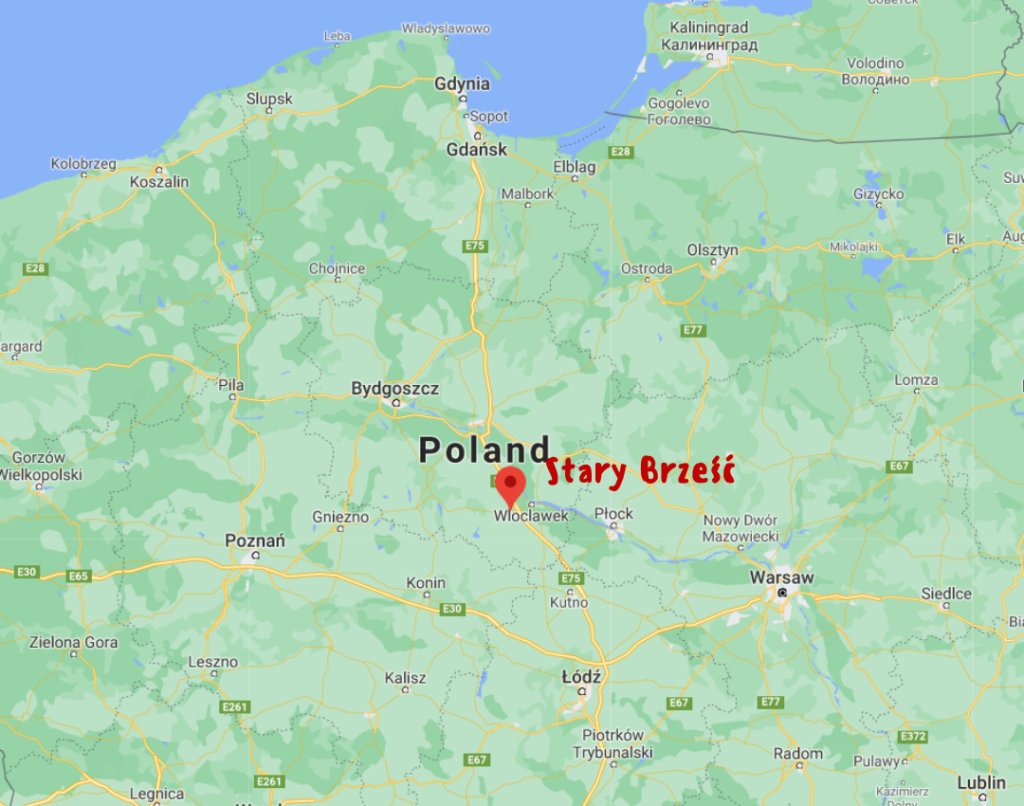
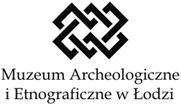
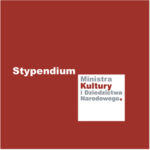
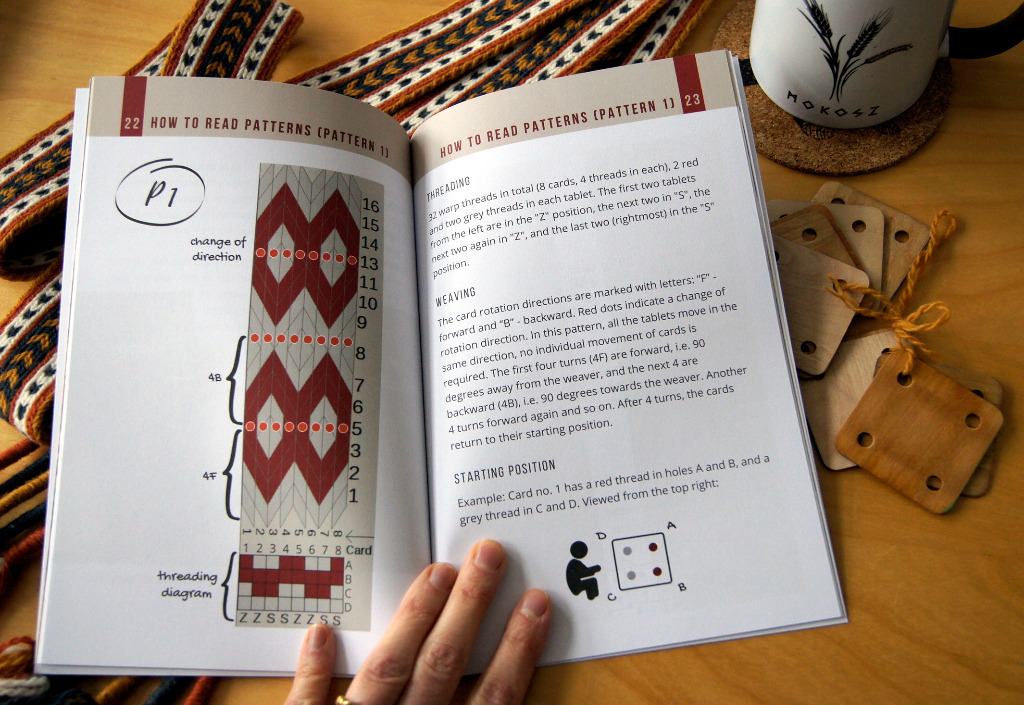
You must be logged in to post a comment.